In Albany’s Pine Bush recently Daisy and I came across a pair of moths that were, we assume, mating. Neither of us had ever seen such a moth, nor had we ever seen any moths mating so it was, um, interesting. Anyway, I sent some pictures over to Patrick and he quickly responded with an identification which was a good thing as I never would have figured this one out on my own.
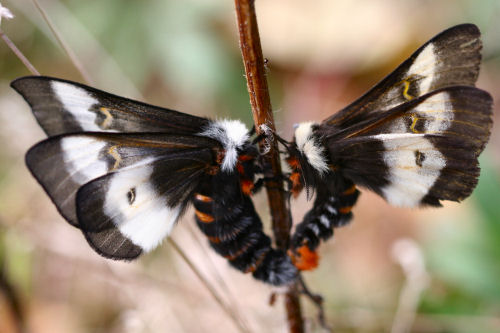
The Buck Moth (Hemileuca Maia) is a diurnal moth that emerges in late fall or early winter. Their host plants for their caterpillars are a variety of oaks, which makes sense, seeing as the Pine Bush is loaded with Scrub Oaks like the one below.
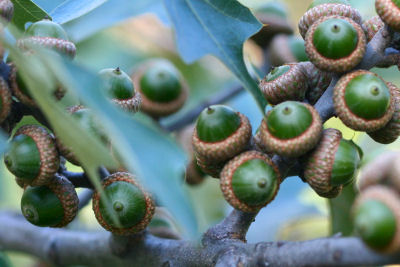
According to Butterflies and Moths of North America the Buck Moth emerges in the morning, mates in the early afternoon, which is when we observed the loving above, and lays eggs (well, the females do anyway) in the late afternoon in rings around the twigs of the host.
The male of the Buck Moth is easy to distinguish; it is smaller and has a red-orange tipped abdomen. While we were watching one pair the male squirted a bunch of unidentified liquid on the ground, which I think might have been related more to the fact that we were too close than anything to do with the mating. Not that we looked too closely after that. Anyway, enjoy the rest of the pictures of these most interesting and lovely-colored creatures.
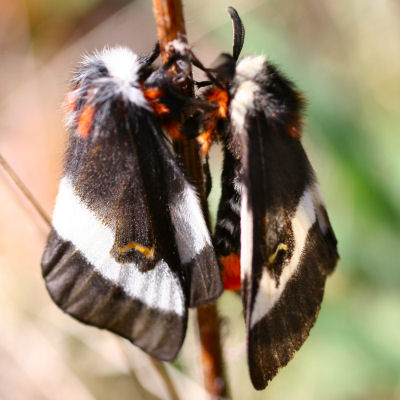
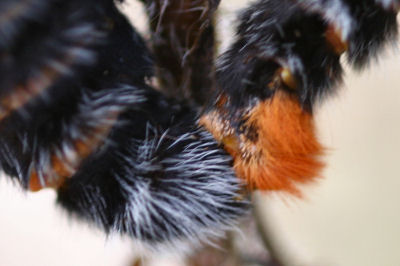
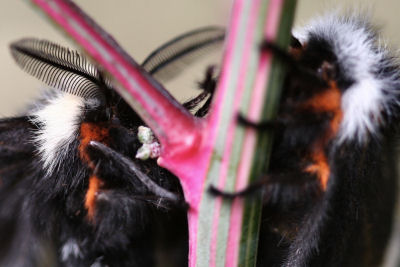
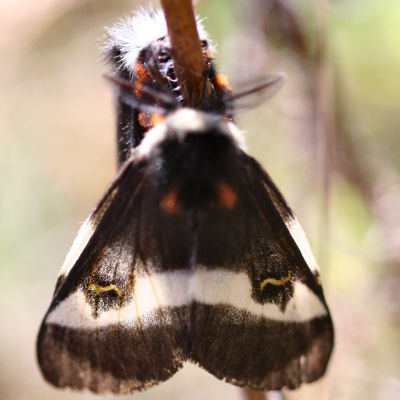
And if you want to see the rather ugly caterpillar of the Buck Moth, click here.













Good stuff. I’m glad I could help. I love the pics. I love moths, especially the large, well-marked ones (which are in the minority!)
Interesting post!
On a note totally unrelated to birds or moths, I was reading The Nightjar blog and saw your comment…..are you a Cardinal fan? All the Birdfreaks are Card fans…just curious!
Great birding to you!
@Veery: I bleed Redbird red. And I got to see them put a hurtin’ on the Mets last Thursday.
Corey – great macro shots. Very interesting info on Buck moths. Thanks.
Hi Corey, these are great pics of a state listed species! I work for the NY Natural Hertiage Program and was wondering if we could use a couple in our online conservation guides. You can contact me at kaperkin@gw.dec.state.ny.us. Thanks a bunch.
Hi
I’m writing an article on the Buck Moth that’s going to be published on the University of Florida’s Featured Creatures Website (creatures.ifas.ufl.edu/index.htm). The site is used for education purposes only. I wanted to know if I could use a couple of your photos of the buck moths mating. You would be sited as the photographer. Thanks for your time.
The buck moth caterpillar hurts like an expletive if you touch it accidentally like I did just now. I’m doing some gardening in the great state of Louisiana and these guys are all over the place due to the large number of live oaks and water oaks that we have around here. I took a break to look up the creature that caused painful welts on my arms and came across your photos. Good to see these guys turn into a beautiful and rather striking moth. Beauty is painful.
Be well and happy birding.
At 1:09pm, December 8, I spotted my first buck moth of the year here in the Carrollton neighborhood of New Orleans.
My kid accidentally stomped on the larva of this beautiful moth and was in terrible pain. He has a caterpillar-shaped mark comprised of tiny red stings on the sole of his foot. Stay away. They are freaky looking for a reason!
How do you deter them from your trees, we have a inn and new to New Orleans and we were told about this, is there a spray for the oak tree so they wont lay there eggs? If you touch or step does it hurt? Worried about guest stepping or getting in contact with them. Also do they fall out of trees when become caterpiller Please answer question if can, I lived in California 51 years never had these. Thank You
Why would you want to get rid of such a beautiful, harmless, creature?